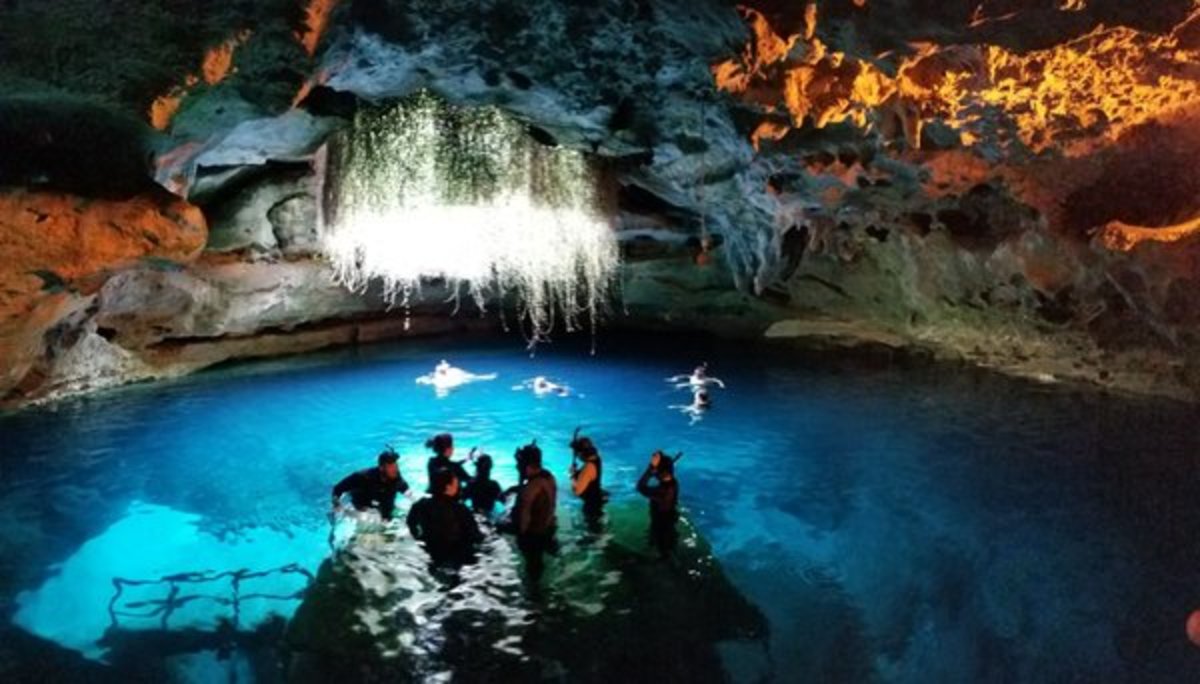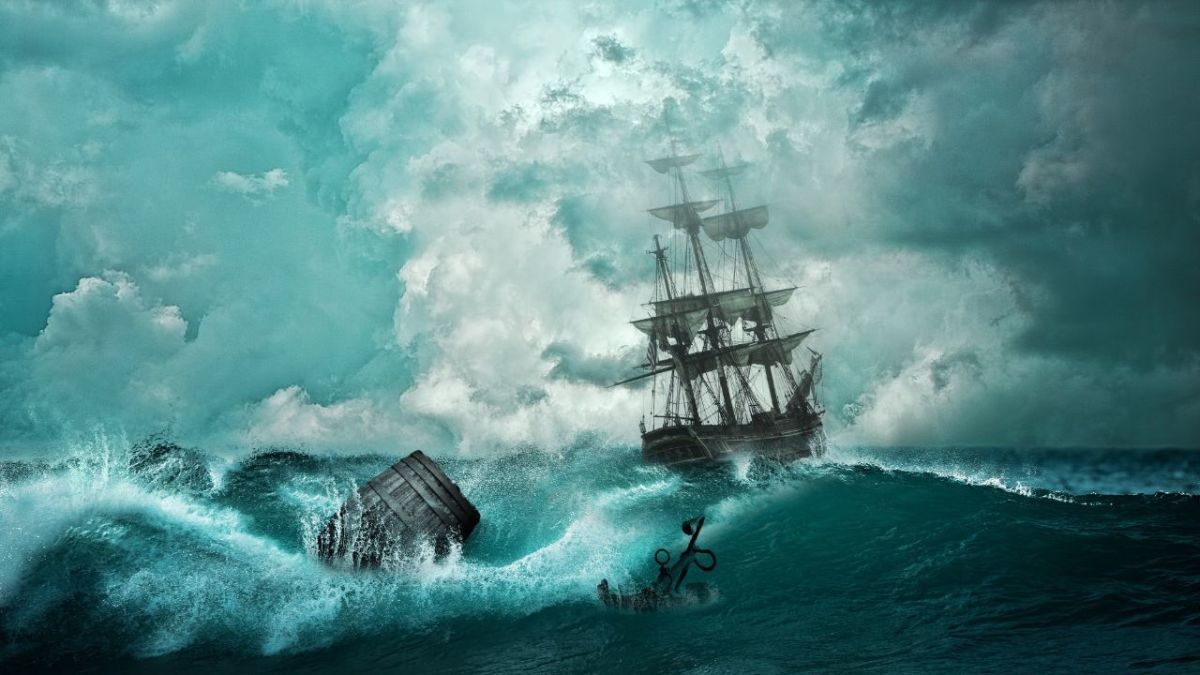Swimming Lessons for Children
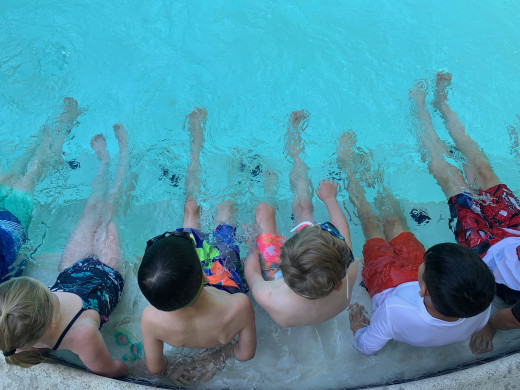
When Should You Begin Swim Lessons For Your Child?
This is a question that many parents of children under the age of five years old face every summer - whether or not to enroll their youngster in swim lessons, at a private or public entity. With over 45 years of teaching swim lessons experience behind me, I have the answer for you!
Helping Your Child Learn to Love the Water With or Without Lessons
In recent years, several pool and water safety organizations have starkly changed the mentality regarding young children (babies and toddlers) receiving swim lessons. While we broaden the term "swim lessons" when talking about babies, there are several methods and skills a baby can learn but swimming through the water using a stroke, is not one of them.
I used to be of the old-fashioned mindset - that very young children ages 1-5 can be kept out of lessons but need to play in water. I have changed my mentality as the times have changed and can now recommend, as does the PoolSafely organization, that you should give your child swimming lessons as soon as they are ready.
When are they "ready?" It varies with each child but statistically, it is known that children who can swim and float are less likely to suffer from a water accident. This is reason enough to start lessons or water safety instructions when they are ready.
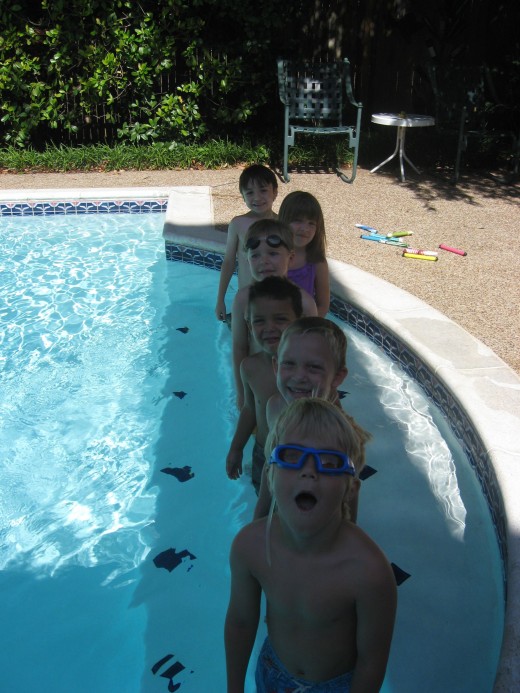
Becoming Confident in Water
As we all know, playing in any depth of water can be dangerous - from one inch to one foot deep. Parents who have pools in their backyards have heightened awareness about pool safety and their young children.
If your child is receptive to being in the water with a US Coast Guard approved flotation device, then yes, enroll them in an age appropriate class. These classes can involve the parent or they can be one-on-one for just the child. If your child is not ready, purchase a plastic pool, fill with a couple of inches of water, toss in a few toys and let them splash away, supervised, of course!
How do you know if your child is "ready?" If your child has a fear of baths, getting their head wet, water on their face, any of these type of behavior, then perhaps you should wait until they are a little older. YOU know your child best, so at this point in their young life, you have to make the decision. If you think lessons will make their fear worse, I suggest you wait until they are a little older and wiser and can understand logic a bit better.
For a toddler or pre-schooler, class lessons or private lessons will be the decision their care taker will make. If a toddler or pre-schooler is not ready, take them to the public pool and let them play and have fun in the pool under your supervision. This is especially beneficial if your local pool has a shallow end with zero gradient that gradually increases in depth. Many public pools have specific play areas for toddlers and young children. This is the best place for them to start learning about water, the effects it has when they fall in it, the buoyancy their body has in it, and the feel of it on their little bodies. My favorite way to learn---by having fun.
Can a three-year old actually learn to swim? Yes, but from my experience, only a handful of students have actually swam correctly at three years old. That number rises as their age increases. Four- and five-year olds can be ready to swim but I have found that five to six years old is the ideal time to make progress through the water and come up with big smiles on their faces because "they did it"! Their bodies are ready to perform multiple large motor skills at the same time.
By giving your child lessons, they will learn to love the water even more, learn potential life-saving skills, and learn skills that will increase in level as they get older and move into a confident swimmer.
This is a choice you have to make as a parent. It is important for some type of "lessons" be given to younger children, just keep your expectations at the correct level. If your child becomes more confident or comfortable in the water, then it was worth it! Almost always, the child builds on the experience in the lessons and blossoms with practice or fun in the water afterwards. This would be the result of a successful swim lesson.
Supervise Your Child!
There should always be constant touch supervision for non-swimming age children.
Get A Lesson!
A recent study by the USA Swim Foundation says swimming ability for children has improved by 5-10%. Be a part of this movement! Find, Get, Give a Swim Lesson. (This was a Tweet sent by Olympic champion Katie Meili.)
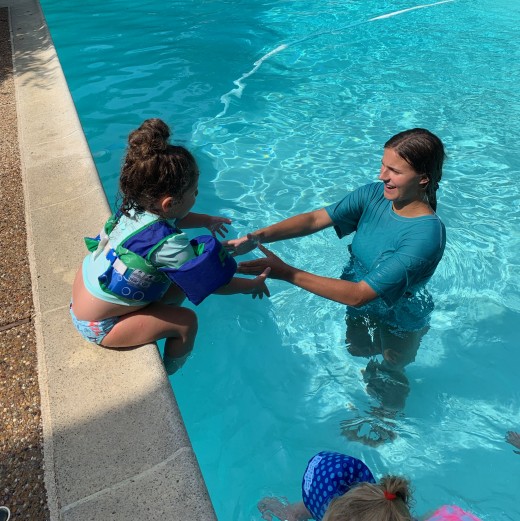
Choosing Between Private or Group Swim Lessons
Basic Guidelines
Consider these major factors when deciding what type of lessons your child should take.
- Private Lessons - These will cost the most but you get one-on-one time with the teacher. However, I believe that good peer pressure is created in a class-like setting urging other students to watch and see if they can "do it" also.
- Class Setting - I have no more than 8 children in a class, with a teacher and usually two aides. This enables one of us to always have eyes on the children. Usually I teach the skill using the aide as the example, then the other aide(s) watches the students while I work with each individual student. That is the biggest number of students I take in a class. I prefer 5-6 for better attention. As mentioned above, I believe good peer pressure is created and that is an advantage to class lessons.
- Length of Class - It is traditional to teach a two-week class for 30 minutes, 10 days. One year this was not convenient for me and I taught a one-week class for an hour a day. The traditional schedule was history! I found that lengthening the class time gave the students a longer period to perfect the skills for that day and the next day, we reviewed what we learned and moved forward. It was very interesting to me that the one-week method had the children "peaking out" at the exact same time as would have happened in a two-week lesson but the resulting skill level was higher and more refined.
- Parents on the Premises - Sometimes it is advantageous to have parents leave the premises. Other times, the student does better having their parent or care giver stay. Either way, make sure communication is shared to have the parent or care giver be an observer only, not a partaker in the class. There will always be a child who "needs" their parent present. I prefer to work with that scenario rather than create ill will. On the last day, it is customary for parents to watch and see their child's progress, hearing the words used for the skills so they can continue instructing the lessons for the summer.
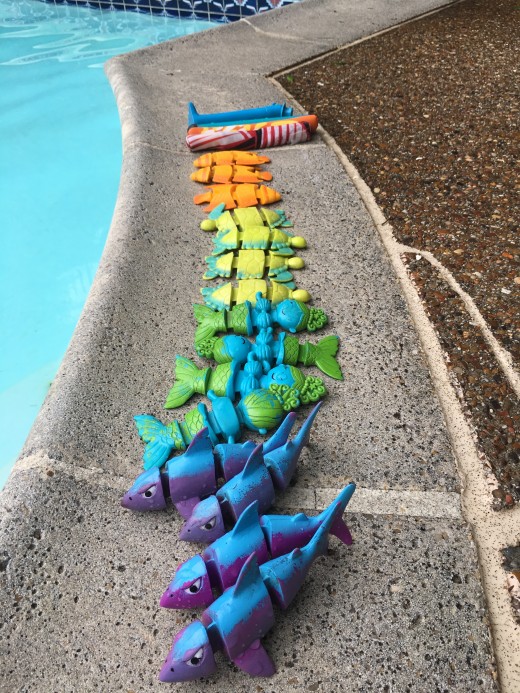
MAY is....
...National Water Safety Month.
Review the rules and get ready for the summer swim time!
Teaching Adults to Swim
Get rid of the fear
One of the hardest but most fulfilling lessons I have taught involve adults who never learned to swim but wanted to try to learn. These lessons were not of the physical type but of the psychological type. It had been embedded in their heads that water equals fear. The adults physicality was not in question, it was mostly a fear of deep water or putting their head underwater, that we had to battle.
Much of the time this fear was grown along with the person as a child, teen, young adult and then adult - one who had never learned to swim. Overcoming this fear, with the right instructor, will lead to a confident adult who is quite proud of moving toward the accomplishment of learning to swim and more importantly, being able to assist their children in the water.
As parents we spend our lives making choices for our children and teaching them to make good choices. Please learn to be comfortable in the water now!
Go To This Website For Safety Information
LIFEGUARDYOURCHILD.ORG
For More Safety Information
WWW.POOLSAFELY.GOV
Red Cross Swimming
redcross.org/watersafety
Pool Safety
Think Logically
Pool safety should be your #1 concern for any pool you visit, but this is about your backyard pool specifically. There are several rules we employ at our home pool.
- First and most important is NEVER SWIM ALONE. This is a universal rule. It applies to everyone: parent, young adult, teens home alone, and of course children. No one should ever swim alone for who will help you if you have an emergency? Our local children's hospital instituted a community program encouraging a designated "Water Watcher" - this is an adult who is NOT on their phone, but one who is actively supervising the children in the water and wearing a wristband tag indicating they are the water watcher.
- Second, you should have your pool area fenced separately from the fence surrounding your yard. This is especially true if you have toddlers or youngsters playing in your home or who play in the back yard a lot.
- Third, have a set of rules for your pool that guests should abide by; ours are: no running, no dunking, no pushing in, and no diving in the shallow end.
- Fourth, have pool safety equipment in your pool area like a lifesaving ring, an extension pole and other devices that float.
- Last, unless you have been trained in water safety rescue, you should not attempt a water rescue. Reach or throw something to the person in distress or dial 911 in an emergency.
Designate a Water Watcher - first segment after intro
Swimming Safety Rhymes/Mantras
Teach your children these rhymes or mantras to help them remember how to help someone needing aid in a swimming environment.
SUMMER FUN, WATER FUN,
IF TROUBLE COMES CALL 911
REACH OR THROW
DON'T GO!
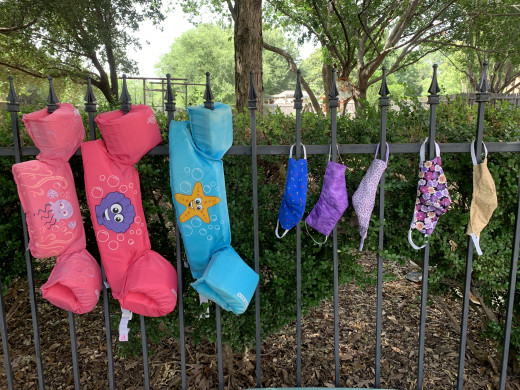
My Recommendation
In summary, I highly recommend these friendly approaches for those children who are afraid (or deathly afraid!) of the water. Playing with mom or dad in a few inches of water can go a long way towards organized swim lessons when the fear subsides. On the flip side, all water safety organizations are now advocating swim lessons as early as your child is ready. The drowning rate decreased nationally over a 20-year period from 1999-2019 from 1.6 per 100,000 to 1.0 per 100,000. This is wonderful news! So, don't delay, get out there and play with your youngster to build a love of water and water safety.
This content reflects the personal opinions of the author. It is accurate and true to the best of the author’s knowledge and should not be substituted for impartial fact or advice in legal, political, or personal matters.
© 2011 Joanie Ruppel




